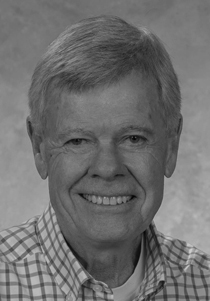Citation
While being a leading researcher in the area of space physics, Rick Chappell has always recognized the importance of public understanding of science in general and in the research field of solar terrestrial research in particular.
Early in his NASA career he worked with the U.S. Space and Rocket Center to create a major exhibit for the museum about the solar-terrestrial system. Later, as mission scientist and active public spokesperson for the international Spacelab 1 mission, which conducted multiple space physics and aeronomy experiments, he led daily press conferences about the science results during the mission and subsequently did science commentary for CNN on other Spacelab missions.
Rick later became a visiting scholar at Vanderbilt University in 1996 in order to conduct a study on the interaction between the science community and the media. Together with science journalist Jim Hartz, he coauthored the book Worlds Apart, which made recommendations to improve the science-media interaction and effectiveness. The results were presented at multiple panel discussions at many universities, on C-SPAN, and in interviews on NPR’s Science Fridays show.
He joined Vanderbilt as a research professor of physics and worked with multiple departments to create an interdisciplinary major in the communication of science and technology that for more than 10 years has been producing graduates who work at the interface between science and the public.
Chappell became the director of the Vanderbilt Dyer Observatory in 2003, and he led a renovation of the observatory to make it an outreach facility for science and exploration for K–12 students and the public. He created summer space camps for middle school students where students learned about space science and built satellite mock-ups.
Rick also developed a partnership between Vanderbilt and Nashville Public Television in 2010 to create television shows about science, technology, engineering, and mathematics (STEM) explorers. These programs were designed for middle school and high school students as well as adults.
In summary, Rick Chappell has worked diligently and effectively in space physics and aeronomy education and public outreach for 4 decades and is most deserving of the 2015 Richard Carrington Award.
—Edgar A. Bering, University of Houston, Houston, Texas
Response
I want to give my sincere thanks to the Space Physics and Aeronomy section of the American Geophysical Union for selecting me for the Richard Carrington Award. Through its recognition, this award reminds all of us about one of our important roles as explorers—the role of communicating to the public what we have learned and the adventures that we have lived. Our intense curiosity about the space environment around us drives us continuously to learn new things. In so doing, our interest in learning can cause us to forget about “reporting to our stockholders,” whose support has enabled us to explore.
We are all explorers, although many of us do not think of ourselves in this way. As young students, we remember reading about explorers in history class, not in science class. Explorers were people who went to places where others had never been before. In reality, explorers are people who learn things that have never been known before, such as understanding the solar-terrestrial environment. We have been given the privilege of spending our lives as explorers.
We all must take the time to tell our stories of exploration and to communicate our discoveries effectively to the public. We must work with the wonderful teachers who inspire the explorers of tomorrow. We must be accessible mentors for students of all ages so that they can feel our enthusiasm and begin to think that they can and they will become explorers. We must share the thrill of discovery and the great adventure of exploration in order to give back to those who have given to us.
The programs that I have worked to create have all been directed toward communicating our stories of exploration and the knowledge of discovery to our stockholders and to the student explorers of tomorrow.
In accepting this award, I want to thank all of the people whom I have been so fortunate to work with during my life in space exploration. They all follow the NASA mindset that there is nothing we cannot do; we just have to figure out how to do it.
—Rick Chappell, Vanderbilt University, Nashville, Tenn.
Citation: AGU (2015), Chappell receives 2015 Space Physics and Aeronomy Richard Carrington Award, Eos, 96, doi:10.1029/2015EO036205. Published on 30 September 2015.
Text © 2015. The authors. CC BY-NC 3.0
Except where otherwise noted, images are subject to copyright. Any reuse without express permission from the copyright owner is prohibited.

